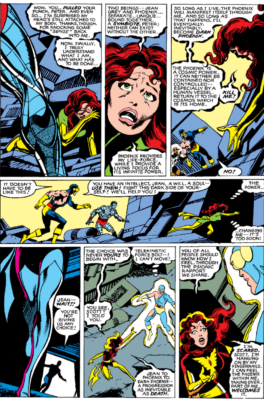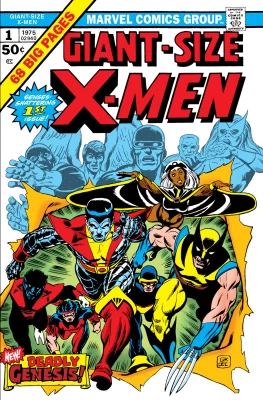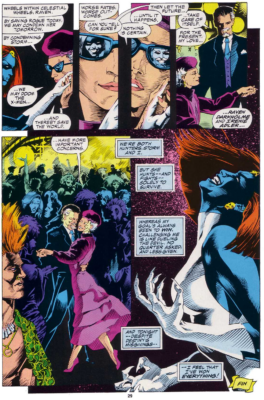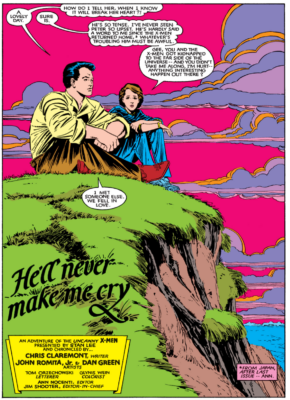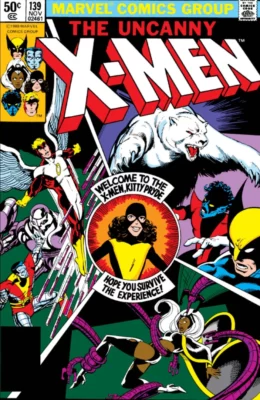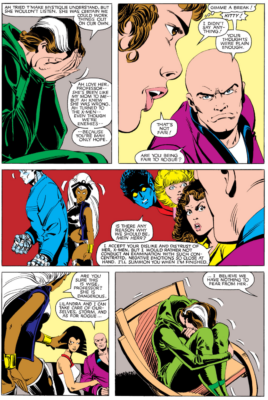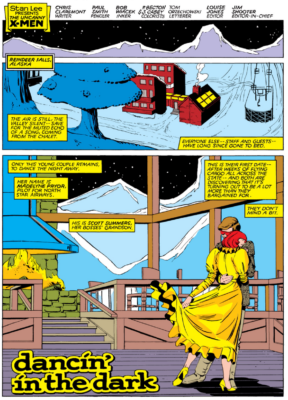Chris Claremont’s X-Men Further Humanized Superheroes by Alex Grand
Read Alex Grand’s Understanding Superhero Comic Books published by McFarland Books in 2023 with Foreword by Jim Steranko with editorial reviews by comic book professionals, Jim Shooter, Tom Palmer, Tom DeFalco, Danny Fingeroth, Alex Segura, Carl Potts, Guy Dorian Sr. and more.
In the meantime enjoy the show:
Breathing a touch of humanity into superheroes is no mean feat, but it’s possible when building upon the reality-infused approach established by Silver Age editors/co-creators, Julius Schwartz and Stan Lee. Chris Claremont carried on their legacy, by building on their foundational work and raising the bar in the humanization of superheroes with his nuanced exploration of emotional vulnerability, inclusivity, and everyday trials.
While the Marvel characters of Stan Lee, Steve Ditko and Jack Kirby frequently encountered moral dilemmas and Julius Schwartz’s DC Comics protagonists wrestled with scientific problems, Claremont furthered superheroes’ emotional vulnerability by probing the darker elements of their existence. In the Dark Phoenix Saga (X-Men #129-138, 1980), Claremont scrutinized Jean Grey’s emotional upheaval as she yielded to the Phoenix Force’s corruptive power. Her path to redemption and ultimate self-imposed demise unveiled the disastrous outcomes of unrestrained power. This heartfelt arc resonated with readers, demonstrating Claremont’s ingenuity which stems from his aptitude for exposing superheroes’ weaknesses. By making them more imperfect and psychologically approachable, he allowed readers to empathize with their inner battles.
Moreover, Claremont humanized iconic characters like Wolverine and Storm by revealing their personal vulnerabilities. Wolverine’s struggle with his bestial self (Wolverine Vol. 1 #1-4, 1982) offered readers a glimpse into the psychological toll that his experiences as a soldier, assassin, and experiments took on him. By exposing these darker elements of his backstory, Claremont transformed Wolverine into a more complex and nuanced character.
Similarly, Storm’s claustrophobia in X-Men #96, 1985 brought her closer to readers, who could empathize with her personal challenges despite her extraordinary abilities. By exploring the origins of her fear through the loss of her parents and showing how it affected her role as a superhero, Claremont added depth to her character and demonstrated that even the most powerful heroes have their weaknesses.
While Lee and Schwartz oversaw the creation of iconic characters from various backgrounds, Claremont went a step further by emphasizing diversity and representation in his storytelling. His narratives expanded on the daily experiences of the international X-Men introduced by Len Wein and Dave Cockrum in Giant-Size X-Men #1, 1975 like Storm, Colossus, and Nightcrawler, who not only expanded the team’s global reach but also made it more inclusive and representative of the real world. Claremont’s commitment to diversity went beyond mentioning characters from different countries; he also imbued them with unique cultural backgrounds and experiences, allowing readers from all walks of life to see themselves reflected in the pages of his comics.
Mystique, a complex villain with a fluid identity, first appeared in Ms. Marvel #16-18, 1978 further challenging traditional notions of good and evil in superhero narratives. Her morally ambiguous nature and ever-shifting allegiances made her a fascinating and unpredictable character, reflecting the complexities and gray areas that exist within human nature.
In addition, Claremont played a pioneering role in the representation of LGBTQ+ characters in mainstream comics. In the case of Mystique, Claremont subtly hinted at her relationship with Destiny in Marvel Fanfare #40, 1988, another character he co-created with John Byrne. It’s important to consider that, during his tenure, their relationship wasn’t explicitly stated in the comics, likely due to the restrictions of the Comics Code Authority at the time. Despite these limitations, Claremont managed to push the boundaries of representation within the comic book industry, paving the way for future creators to delve deeper into LGBTQ+ themes and characters.
Lee and Schwartz’s superheroes often grappled with day-to-day challenges, but Claremont’s heroes faced even more relatable issues. From Kitty Pryde’s school struggles in X-Men #139 to Colossus’ imperfect love life in X-Men #183, 1984, Claremont showed that superheroes, too, must balance their responsibilities with their personal lives. By grounding his characters in real-life situations, Claremont made their stories more accessible to readers, who could draw parallels between their own experiences and those of their heroes.
Kitty Pryde’s journey in X-Men #139, 1980 for instance, revealed the difficulties she faced as a young mutant trying to navigate the complexities of adolescence, school, and her newfound powers. By grounding the everyday struggles of teenagers into her dialogue, Claremont allowed readers to connect with her on a deeper level, reminding us that even superheroes face the same challenges we do.
Similarly, Rogue’s inability to touch others without absorbing their powers, explored in X-Men #171, 1983 showcased her profound loneliness and isolation. Through her story, Claremont highlighted the importance of human connection and the emotional toll that a lack of it can take on an individual, even someone as powerful as Rogue. Her struggle to find intimacy and maintain relationships served as a reminder that superheroes are not immune to the emotional hardships faced by ordinary people.
Cyclops’ relationship with Madelyne Pryor, featured in X-Men #168-175, 1983 explored themes of love, loss, and moving on. As Cyclops grappled with the uncanny resemblance between Madelyne and his deceased lover, Jean Grey, readers witnessed the complex emotions he experienced, such as guilt, confusion, and longing. By delving into the intricacies of this very human relationship and the challenges they present, Claremont further humanized the visor’d hero, relating a deeper level of struggle to readers.
Building on the comic storytelling groundwork established by realism pioneers such as editors/co-creators, Stan Lee and Julius Schwartz, Chris Claremont elevated the superhero genre by delving into profound emotional vulnerability, championing diversity and representation, and addressing everyday life challenges. His distinct approach to character development has created a lasting influence on the comic book industry, providing solace, comprehension, and motivation to innumerable readers through his skillfully crafted superheroes.
Join us for more discussion at our Facebook group
check out our CBH documentary videos on our CBH Youtube Channel
get some historic comic book shirts, pillows, etc at CBH Merchandise
check out our CBH Podcast available on Apple Podcasts, Google PlayerFM and Stitcher.
Use of images are not intended to infringe on copyright, but merely used for academic purpose.
Images used ©Their Respective Copyright Holders









